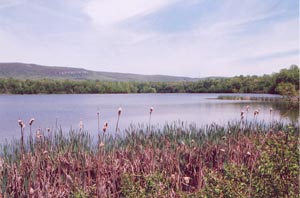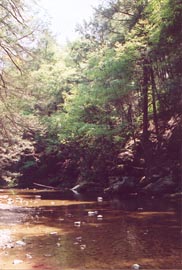Eastern PA Birding
.jpg)
.jpg)
Eastern PA Birding
by Dave DeReamus
Birding Information for East-central Pennsylvania
Updated on 9/16/2024
Best Viewed at 1920 x 1080 pixels
Recent Rare or Unusual Area or State Sightings!
* GRAY FLYCATCHER in Mifflin County on November 24, 2023!
* WESTERN KINGBIRD in Northampton County on November 1, 2023!
* DARK-EYED JUNCO x WHITE-THROATED SPARROW in Northampton County on October 17, 2023!
* AMERICAN FLAMINGOS in Franklin County on September 7, 2023!
* LIMPKIN in Lancaster County on July 8, 2023!
* MOTTLED DUCK in Washington County on May 25, 2023!
* SANDHILL CRANES in Northampton County on March 5, 2023!
* EURASIAN WIGEON in Northampton County on March 4, 2023!
* COMMON EIDER AND COMMON SHELDUCK in Crawford County on December 20, 2022!
* BARNACLE GOOSE in Northampton County on December 5, 2022!
* HERMIT WARBLER in Delaware County on November 27, 2022!
* MOUNTAIN BLUEBIRD in Northampton County on November 5, 2022!
* RUFOUS HUMMINGBIRD in Northampton County on October 5, 2022!
* LITTLE BLUE HERON and LEAST BITTERNS in Northampton County on July 27, 2022!
* RED-NECKED PHALAROPE in Northampton County on May 31, 2022!
* CLAPPER RAIL in Montgomery County on April 26, 2022!
* TUFTED DUCK in Lancaster County on February 28, 2022!
* GLAUCOUS-WINGED GULL in Bucks County on February 20, 2022!
* NORTHERN SHRIKE in Northampton County on November 16, 2021!
* WHITE-FACED IBIS in Chester County on September 18, 2021!
* NEOTROPIC CORMORANT in Lycoming County on April 11, 2021!
* PINK-FOOTED GOOSE in Northampton County on January 30, 2021!
* TUNDRA BEAN-GOOSE in Delaware County on December 16, 2020!
* VARIED THRUSH in Northampton County on March 3, 2019!
* 110,000 SNOW GEESE in Northampton County on December 29, 2018!
* GYRFALCON in Northampton County on November 11, 2018!
* ROCK WREN in Montgomery County on October 3, 2018!
* VARIED BUNTING in Allegheny County on May 7, 2018!
* GRAY-CROWNED ROSY-FINCH in Crawford County on February 8, 2018!
Trip Reports
* 2023 New Jersey Trip for Red-flanked Bluetail!
* 2023 Texas Trip for Cattle Tyrant, Roadside Hawk, Gray-collared Becard, Bare-throated Tiger-Heron, and Mottled Owl!
* 2023 Florida Trip for Gray Gull!
* 2023 Florida Trip for Large-billed Tern!
* 2023 Florida Trip for Little Bunting!
* 2022 New Jersey Trip for Eurasian Marsh-Harrier!
* 2022 Florida Trip for Bahama Mockingbird!
* 2022 Michigan Trip for Southern Lapwing!
* 2022 Florida Trip for Zenaida Dove, Thick-billed Vireo, and Tricolored Munia!
* 2022 Texas Trip for Bat Falcon and Red-vented Bulbul!
* 2022 Maine Trip for Steller's Sea-Eagle!
* 2021 Florida and Texas Trip for Cuban Pewee, Red-legged Thrush, Black-faced Grassquit, and Spotted Rail!
* 2020 Rhode Island Trip for Common Cuckoo!
* 2020 Arizona - New Mexico Trip for Eared Quetzal and European Golden-Plover!
* 2020 Arizona Trip for Eared Quetzal and Plain-capped Starthroat!
* 2020 Rhode Island Trip for Terek Sandpiper!
* 2020 Arizona Trip for Eared Quetzal and Berylline Hummingbird!
* 2020 Florida Trip that yielded White-cheeked Pintail!
* 2019 Nevada, Idaho, Wyoming, and Utah Trip for Himalayan Snowcock, Cassia Crossbill, and "Franklin's" Grouse!
* 2019 Boreal Chickadee in nearby New Jersey!
* 2019 Florida Trip that yielded Dark-billed Cuckoo!
* 2018 Maine Trip for Great Black Hawk!
* 2018 California - Arizona Trip!
* CORN CRAKE in New York on November 8, 2017!
* COMMON GREENSHANK in New Jersey on October 26, 2017!
* 2017 Florida Trip for Bananaquit!
* 2016 Arizona Trip for Pine and Tufted Flycatchers, and Slate-throated Redstart!
* 2016 Hawaii Trip!
* 2016 Ohio Trip for Brambling!
* 2015 Florida Trip for Western Spindalis!
* 2015 Florida Trip for Variegated Flycatcher!
* 2015 California - Vancouver, British Columbia Trip!
* 2014 California - Arizona Trip!
* 2014 Road Trip to Magee Marsh, Ohio and Iowa!
* 2013 California - Arizona Trip for Blue-footed Booby and others!
* 2013 British Columbia Trip for Red-flanked Bluetail and Citrine Wagtail!
* 2013 Pacific Northwest Trip for Falcated Duck, Citrine Wagtail, and Brambling!
* 2011 California Trip for Bean Goose, Brown Shrike, and Laysan Albatross!
* 2010 Connecticut for White-tailed Kite!
* 2010 South Dakota for Orange-billed Nightingale-Thrush!
* 2010 Texas and Florida!
* 2009 Colorado - New Mexico - Arizona!
* 2008 Arizona!
* 2007 Alaska!
This site was mainly created to archive rare and unusual photo records and other information pertinent to birding in east-central Pennsylvania. This area contains the Lehigh Valley which, as the bird flies, is located about 30 miles east of the world-renown Hawk Mountain Sanctuary, about 50 miles north of Philadelphia, and about 70 miles west of New York City. Despite the increasing development in the area, there are still many unspoiled places to go birding like the two pictured below.

.jpg)
Lake Minsi is located in northeastern Northampton County. The Blue Mountain ridgeline can be seen in the background. This is the same ridge that directs a large amount of raptors to Hawk Mountain Sanctuary during the Fall migration. Yellow-throated Vireo is just one of many interesting species found here.

.jpg)
This hemlock glen along the Bushkill Creek is located in Jacobsburg State Park, also in Northampton County. It is one of the few places in the area with old-growth forest. A nice list of species have been recorded here due to the many different types of habitat that the park holds. This White-breasted Nuthatch was photographed there.
My latest photos are being taken with a 500mm Nikkor lens mounted on a Nikon D850 digital SLR camera. Photos taken from 2016 to 2024 were taken with a 300mm Nikkor lens and a 1.4x teleconverter mounted on a Nikon D7200 digital SLR camera. Photos taken from 2008 to 2016 were taken with 200-400mm Tamron zoom lens mounted on a Nikon D80 digital SLR camera. All 'still' photos and 'videograbs' from between January 2005 and January 2008 were taken with a Canon Optura 40 Mini-DV camcorder. My older bird photos were taken with either a 1000mm Celestron mirror lens or a 200-400mm Tamron zoom lens mounted on a Nikon 6006 film camera body. All photos and other information contained in this site may not be reproduced without my written consent. Feel free to E-mail me with any comments or suggestions about this site.
I started the Eastern PA Birdline, a weekly report of our area's bird sightings, in 1991 and compiled it for 30 years to 2021. My reporting area included all of Lehigh and Northampton Counties with the northern edge of the area reaching Beltzville State Park and the southern edge reaching Peace Valley Park in Bucks County. The introduction of eBird and numerous Facebook pages and GroupMe groups eventually made the Birdline obsolete. Thanks goes to the Lehigh Valley Audubon Society for its long-standing support. Directions to many of the area's birding sites that were mentioned in the 'Birdline' can be found in the recently revised book, "Birds of the Lehigh Valley and Vicinity".

The Area's Birding Year
(A General Guide To Birding Throughout The Year In Our Area)
Of course, weather plays a big factor when it comes to what birds can be expected in our area at a particular time, but most species still manage to keep an amazingly precise schedule year after year. I have found that, in most cases, this timetable rarely deviates more than a week before or after, especially in Spring. And, they do it without watches or maps! This summary follows the calendar year.
Winter: Even before January begins, many gulls occupy area lakes and rivers, especially those near the area landfills. Both waterfowl and gull numbers depend upon the harshness of the winter. Occasionally, winter birding will contain irruptive species, such as Snowy Owl, Northern Shrike, or a combination of winter finches.
Spring: Although many people associate the arrival of spring with the sighting of their first Robin, I consider it to be when the first "blackbirds" invade the area, which is usually around the third week in February.
By March, waterfowl numbers are on the increase as they migrate through. By mid-March, the raptor migration begins, although their numbers are just a fraction of what is seen during the fall.
As April rolls around, swallows begin to arrive. The last two weeks of the month usually produce the peak of the raptor migration. By the end of April, most of the gulls and waterfowl have moved north and are replaced by several species of shorebirds, warblers, and sparrows.
Most birders consider May the most exciting month of the year. The first three weeks of the month contain the arrival of most of the shorebirds, hummingbirds, flycatchers, vireos, thrushes, and others in addition to the warblers in their colorful breeding plumage.
Summer: By the beginning of June, most of the migrants have departed and the permanent and summer residents are on nesting territories.
July, oddly enough, actually marks the start of the fall migration as some shorebirds are already beginning to head south. This is also the start of what is known as the "post-breeding dispersal" period, which is when some of the parent birds and their offspring begin to wander away from their home territories.
Fall: This "post-breeding dispersal" also runs into August and is evident by an increase in the numbers of herons and egrets found in the area. Shorebirds numbers increase throughout the month. As the month winds down, some of the first raptor movements are noted along the area's ridges. Hummingbirds, flycatchers, and warblers also begin heading south.
As September passes, the raptor migration picks up and produces the peak number of species by the month's end. Also by the end of the month, many of the shorebirds and most of the hummingbirds, swallows, vireos, and warblers have left for warmer climates and are replaced by the beginning of the sparrow movement.
The beginning of October continues to produce the most species of raptors. Much of the sparrow migration occurs during this month. By the end of the month, waterfowl begin to arrive.
November contains most of the waterfowl movement, and the raptor migration drops off significantly. Gulls are on the increase and most of the winter birds have arrived by the end of the month.
As December and the year wanes, waterfowl numbers decline in accordance with the harshness of early winter. The area's Audubon Christmas Bird Counts always have the potential to turn up some unusual sightings.
'PABIRDS' Listserv and 'Pennsylvania Birds' Magazine Subscription Information
The PABIRDS Listserv is an E-mail discussion list containing instantaneous information supplied by PA birders about birds and birding in Pennsylvania. This service, provided by 'Audubon PA', is absolutely free with no strings attached. For more detailed information about the listserv and how to join, go to the Listserv information page of the Pennsylvania Society for Ornithology's Website, which also has information on how to join that organization and subscribe to Pennsylvania Birds, a magazine devoted to birding in Pennsylvania.
About Me
In 1973, my parents took me to Hawk Mountain Sanctuary where I saw many Broad-winged Hawks and my first Bald Eagle. I was 'hooked' and from then on began what, in those days, was called "birdwatching." From 1974 through the early 1980's, I was a "regular" hawkwatcher at Hawk Mountain Sanctuary, where I learned my hawk identification skills from people like Jim Brett and Babe Webster. I often assisted with and, at times, kept the official count. I monitored the Spring migration from Smith Gap in 1980 and 1981 and started the Morgan Hill Hawkwatch in 1982 where I monitored the Spring migration yearly until 1987. My boundaries gradually expanded from hawkwatcher to "birder" in the mid-80's. I started the 'Eastern PA Birdline' in 1991 and compiled it for 30 years until 2021.
Over the years, I've seen over 860 species in the continental U.S. and Canada. My travels have covered all 50 states, six Canadian provinces, and the Yucatan Peninsula of Mexico.
Back to the top.

.jpg)

.jpg)
.jpg)
.jpg)
